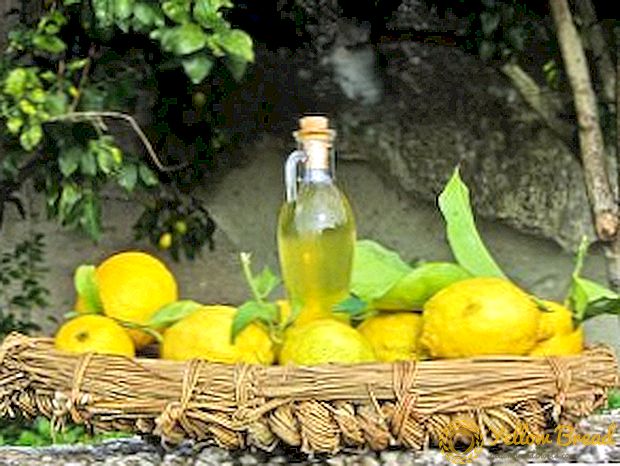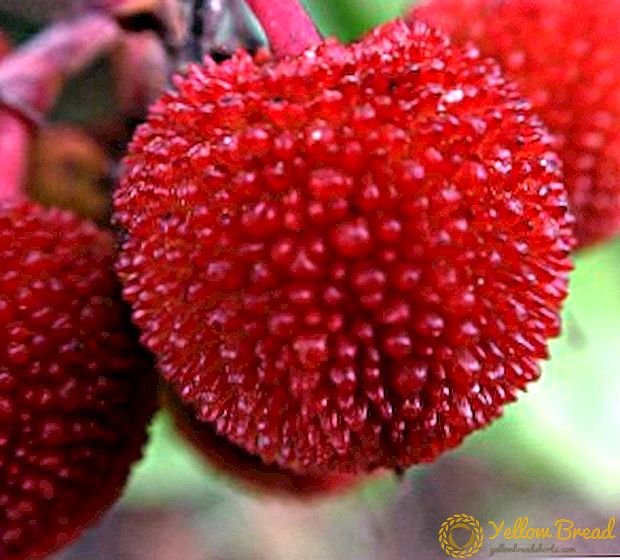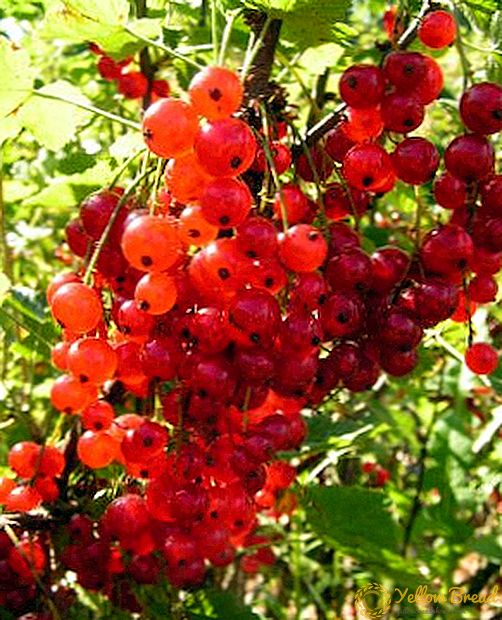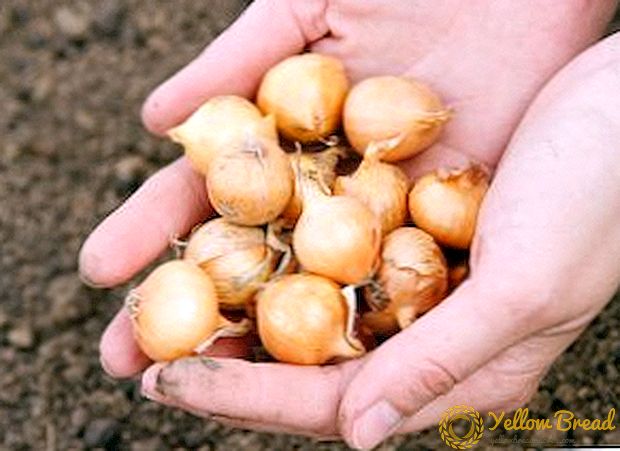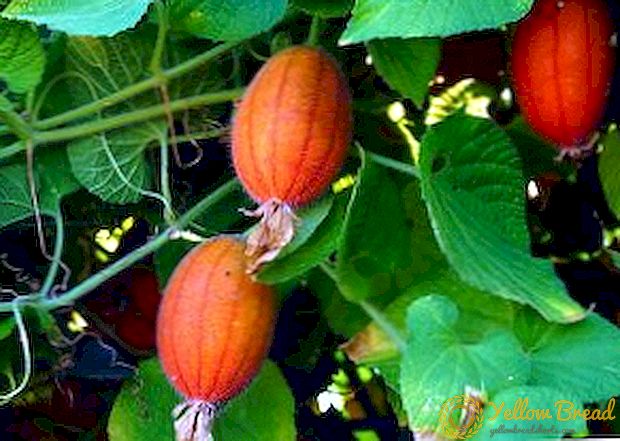 Cilantro or coriander - Long-known spice, especially loved by residents of Eastern countries that have grown it for many years. It is used as a spice for various dishes: meat, vegetable, in sauces, as well as raw, in salads.
Cilantro or coriander - Long-known spice, especially loved by residents of Eastern countries that have grown it for many years. It is used as a spice for various dishes: meat, vegetable, in sauces, as well as raw, in salads.
The plant coriander has a pronounced pleasant aroma that can not be confused with anything. The plant contains a large amount of vitamins and ascorbic acid. Its useful properties are widely used in traditional medicine, as well as in perfumery and cosmetology.
- Coriander and cilantro, two names - one plant
- How to plant coriander in the garden, terms and conditions for planting a spicy plant
- Terms of planting coriander (cilantro)
- How to choose a site for planting (soil, lighting, wind resistance, etc.)
- How to plant coriander seeds
- Site preparation for sowing
- How to sow coriander seeds
- Proper care of seedlings
- Features watering coriander
- Rules for feeding coriander in the garden
- Thinning sprouts
- Coriander in the garden: harvesting
- What if coriander began to bloom
Coriander and cilantro, two names - one plant
 Many people do not know that coriander and cilantro are one and the same plant, and they consider them different spices. In fact, coriander is the seed of a plant, and cilantro is its greenery. In cooking, cilantro herbs are used as an additive in salads or sauces, and coriander seeds are used as a spice to keep meat dishes fresh longer.
Many people do not know that coriander and cilantro are one and the same plant, and they consider them different spices. In fact, coriander is the seed of a plant, and cilantro is its greenery. In cooking, cilantro herbs are used as an additive in salads or sauces, and coriander seeds are used as a spice to keep meat dishes fresh longer.
In addition, flavored coriander is added to sausages, canned goods, cheeses, pastries, and even some German beers. Coriander seeds are rich in essential oils, vitamins A, E, K, PP, as well as potassium, sodium, calcium, iodine, phosphorus.
How to plant coriander in the garden, terms and conditions for planting a spicy plant
Coriander seed (coriander vegetable) - This is an annual herb of the genus Coriander, an umbrella family. The most common variety is Yantar, which accounts for 90% of all acreage.
 Growing coriander is massively distributed in Ukraine, in the south of the European part of Russia, in the North Caucasus. However, some vegetable growers manage to grow it in the latitude of Moscow and even in central Yakutia. Wild coriander can be seen in the Crimea, the Caucasus and Central Asia.
Growing coriander is massively distributed in Ukraine, in the south of the European part of Russia, in the North Caucasus. However, some vegetable growers manage to grow it in the latitude of Moscow and even in central Yakutia. Wild coriander can be seen in the Crimea, the Caucasus and Central Asia.
Coriander was used in cooking and for medicinal purposes by the inhabitants of Ancient Greece and Ancient Rome, then it spread throughout Europe, southern European regions of Russia and the Caucasus. The technology of growing coriander, despite its exoticism, does not require complicated measures, therefore, if desired, coriander can grow on its own plot even a beginning vegetable grower.Cilantro is grown before the seeds ripen, and then the plant is left on the seeds and coriander is obtained.
Terms of planting coriander (cilantro)
Cilantro is a fairly cold-resistant plant, it can withstand temperatures down to -5˚ C. Therefore, it is possible to plant coriander before winter, then the first green will appear in March. To grow coriander in a greenhouse, it should be sown at the end of February - beginning of March, then the first seedlings will appear in 40 days.
 But most often coriander is sown in open ground in spring, when the soil thaws sufficiently and warms up, around the end of April. With such a crop, the seeds will ripen by the end of August.
But most often coriander is sown in open ground in spring, when the soil thaws sufficiently and warms up, around the end of April. With such a crop, the seeds will ripen by the end of August.
If you sow the seeds in May - June, the flower stalks will sprout in 20 days, but the plant will be weaker than if planted in early spring.
Sowing coriander can be carried out not only in spring, but even in August - only shoots will appear even later.
How to choose a site for planting (soil, lighting, wind resistance, etc.)
Coriander is a light-demanding plant, with its deficiency, maturation slows down, yield and essential oil content decrease. To get a good harvest of seeds, coriander should be sown only on a sunny plot. It is best to plant the plant on a plain or a hill, but not in a hollow, otherwise it will drench to maturity. The soil is suitable loamy and sandy, moderately acidic or neutral, friable and well-fertilized during digging.
How to plant coriander seeds
Some novice vegetable growers who did not know how to plant coriander at their dacha simply threw some coriander seeds into the soil and stuffed them into the soil with a rake. And after a certain time they received quite good, lush and green cilantro bushes.
 This is another proof of the simplicity of the plant, but this can be done if cilantro is grown only for greenery.
This is another proof of the simplicity of the plant, but this can be done if cilantro is grown only for greenery.
For harvesting and collecting a rich and high-quality crop of spice seed requirements are more stringent. Therefore, there are several conditions on how to properly plant cilantro seeds.
Site preparation for sowing
The soil should be prepared in the fall - carefully dug up on the spade bayonet (approximately 20-28 cm) and well manured. You can add a little sand, and as a fertilizer, add ½ a bucket of a mixture of humus with fresh wood ash per square meter of planting.
Also, as fertilizers, you can use superphosphate and potassium, they need to spill into the soil, before sowing cilantro, 20-30 g per square meter. In the spring, just before sowing, 1 tbsp of soil is added to the soil. spoon of urea per square meter and poured pink solution of potassium permanganate.
 To grow cilantro herbs, you can sow seeds throughout the summer at intervals of a week or two. Cilantro is harvested after 40-55 days, so several harvests can be grown on the same plot. When re-sowing you need to make 1 tsp. superphosphate or nitroammofoski per square meter of soil.
To grow cilantro herbs, you can sow seeds throughout the summer at intervals of a week or two. Cilantro is harvested after 40-55 days, so several harvests can be grown on the same plot. When re-sowing you need to make 1 tsp. superphosphate or nitroammofoski per square meter of soil.
Since coriander grows rather quickly, you need to plant a new batch of seeds about every three weeks, then the leaves and spices will be enough for the whole year.
How to sow coriander seeds
Coriander is sown with seeds randomly or furrows at the rate of 2 g of seeds per square meter and to a depth of 1.5 cm. The distance between plants should be about 10-13 cm, and between rows 25-35 cm.
How long cilantro comes up depends on the weather and when it was planted. In general, quite slowly - from 2 to 4 weeks.
Proper care of seedlings
To care for cilantro seedlings, standard measures are enough which consist of weeding, loosening and timely watering.
Features watering coriander
 It is very important to constantly monitor the soil moisture, as early drying occurs when drying out and the product quality drops sharply. The ground for cilantro should always be loose and moist. It is not necessary to water the cilantro during the rainy or high humidity periods.
It is very important to constantly monitor the soil moisture, as early drying occurs when drying out and the product quality drops sharply. The ground for cilantro should always be loose and moist. It is not necessary to water the cilantro during the rainy or high humidity periods.
During the germination of seedlings, it is sufficient to simply keep the soil moist by pouring 3-5 liters of water per square meter twice a week. During the period of active growth of hardwood mass, it is necessary to ensure abundant and regular watering of cilantro (about 8 liters per square meter) so that it does not start blooming ahead of time.
As soon as the seeds begin to ripen, watering is reduced to a minimum - 2 liters of water per square meter.
Rules for feeding coriander in the garden
Growing coriander seed does not provide additional feeding during active growth and recruitment of hardwood. All nutrients and fertilizers need to be applied in advance, during soil preparation before planting. In the autumn, compost, humus, potash and phosphate fertilizers are added to the soil, and in the spring, just before sowing, nitrogen fertilizing is applied.
Thinning sprouts
 During the growing season, the soil must be kept clean, loose, promptly remove weeds and thin out the crops, choosing the strongest and leaving between them 7-10 centimeters. This is necessary in order to grow lush cilantro and get a high yield, as with dense placement, it will be low-leaved and weak.
During the growing season, the soil must be kept clean, loose, promptly remove weeds and thin out the crops, choosing the strongest and leaving between them 7-10 centimeters. This is necessary in order to grow lush cilantro and get a high yield, as with dense placement, it will be low-leaved and weak.
Coriander in the garden: harvesting
The hardwood mass of cilantro is cut off as it grows. You need to collect greens before flowering. After the peduncles begin to grow actively, the green leafy mass of the plant thins and coarsens.
Experienced growers who plant cilantro properly pick greens up to three times a year. After collecting the coriander leaves, they are dried in the shade, crushed if necessary, put in glass containers and tightly closed.Seeds are harvested at the end of August, when they turn brown brown, dried in the sun and threshed. Stored seeds in paper bags.
What if coriander began to bloom
 Coriander begins to bloom, depending on when it was planted on seedlings. This is usually June-July when landing in late April. When the plant blooms, it ceases to give new shoots with usable leaves. In this case, you can cut off the flower so that the plant can give as many leaves as possible.
Coriander begins to bloom, depending on when it was planted on seedlings. This is usually June-July when landing in late April. When the plant blooms, it ceases to give new shoots with usable leaves. In this case, you can cut off the flower so that the plant can give as many leaves as possible.
In order to collect cilantro seeds, you need to wait for its flowering. When the seeds become brownish brown, the plant should be cut at the root, gathered in bunches and hanged for drying.  You can also not touch the flowers and allow the seeds to fall into the ground, so the plant will sow independently. That is, next year, when all the neighbors in the country will sow cilantro, you will already have a good harvest of greenery.
You can also not touch the flowers and allow the seeds to fall into the ground, so the plant will sow independently. That is, next year, when all the neighbors in the country will sow cilantro, you will already have a good harvest of greenery.


